The Effects of Ti/Ni Doping on the Friction and Wear Properties of DLC Coatings
Abstract
:1. Introduction
2. Experimental Details
3. Results and Discussion
3.1. Texture and Hardness
3.2. Adhesion and Tribological Behaviors
4. Conclusions
- (1)
- Ti/Ni doping can effectively improve the surface quality and interface bonding strength of DLC coatings. The Ni doping of DLC coatings had a compacted and smooth surface, with higher hardness values, elastic modulus, plastic toughness, and durability. The addition of Ni promoted the formation of sp2-C.
- (2)
- Both Ti and Ni doping can effectively improve the bonding force of DLC coatings. The presence of Ni in the substrate and Ni-containing coating makes for higher structural compatibility and improves binding strength.
- (3)
- The coating containing Ni achieved superior friction and wear performance. The Ni-doped DLC coating was observed as having a more stable friction coefficient, stronger wear resistance, and effectively suppressed oxidation corrosion at the friction interface.
Author Contributions
Funding
Institutional Review Board Statement
Informed Consent Statement
Data Availability Statement
Conflicts of Interest
References
- Tillmann, W.; Dias, N.F.L.; Stangier, D.; Schaak, C.; Hoges, S. Coatability of diamond-like carbon on 316L stainless steel printed by binder jetting. Addit. Manuf. 2021, 44, 102064. [Google Scholar] [CrossRef]
- Carvalho, I.; Rodrigues, L.; Lima, M.J.; Carvalho, S.; Cruz, S.M.A. Overview on the Antimicrobial Activity and Biocompatibility of Sputtered Carbon-Based Coatings. Processes 2021, 9, 1428. [Google Scholar] [CrossRef]
- Zhou, Y.; Li, L.; Chen, Z.; Rao, L.; Yang, Q.J.D.; Materials, R. Accidental damaged diamond-like carbon coating by prefabricated scratches: Experimental exploration on anticorrosion and tribological performances. Diam. Relat. Mater 2020, 111, 108181. [Google Scholar] [CrossRef]
- Zhang, S.D.; Jiang, G.; Yang, Y.; Li, H.T.; Yan, F.Y.; Yan, M.F.; Zhang, Y.X. Annealing Effect on Microstructure of Novel Ti Doped DLC Multilayer Films. Coatings 2023, 13, 833. [Google Scholar] [CrossRef]
- Carmona, A.E.; Delfin, F.A.; Maskavizan, A.J.; Brühl, S.P. Análisis comparativo de recubrimientos duros de DLC y TiSiCN frente al desgaste y a la corrosión. Matéria 2023, 28, e20220312. [Google Scholar] [CrossRef]
- Duan, J.Q.; Li, M.H.; Wang, W.Z.; Huang, Z.M.; Jiang, H.; Ma, Y.P. Preparation and Performance of Multilayer Si-B-C-N/Diamond-like Carbon Gradient Films. Materials 2023, 16, 1665. [Google Scholar] [CrossRef]
- Zahid, R.; Masjuki, H.H.; Varman, M.; Mufti, R.A.; Kalam, M.A.; Gulzar, M. Effect of Lubricant Formulations on the Tribological Performance of Self-Mated Doped DLC Contacts: A review. Tribol. Lett. 2015, 58, 32. [Google Scholar] [CrossRef]
- Zeng, H.D.; Zhang, Y.W.; Wu, Z.; Qin, Z.B.; Ji, H.M.; Liu, X.J.; Li, B.Y.; Hu, W.B. Microstructure, magnetic properties and corrosion resistance of Co-DLC nanocomposite film controlled by substrate temperature. Diam. Relat. Mater. 2023, 133, 109673. [Google Scholar] [CrossRef]
- Wang, K.; Zhou, H.; Zhang, K.; Liu, X.; Zheng, Y.J.D.; Materials, R. Effects of Ti interlayer on adhesion property of DLC films: A first principle study. Diam. Relat. Mater 2021, 111, 108188. [Google Scholar] [CrossRef]
- Duminica, F.D.; Belchi, R.; Libralesso, L.; Mercier, D.J.S.; Technology, C. Investigation of Cr(N)/DLC multilayer coatings elaborated by PVD for high wear resistance and low friction applications. Surf. Coat. Technol. 2018, 337, 396–403. [Google Scholar] [CrossRef]
- Wang, H.; Qiu, Z.G.; Lin, S.S.; Xu, W.; Dai, M.J.; Su, Y.F. A Comparative Study of Copper-doped and Copper, Nitrogen Co-doped DLC Film Electrode and Its Electrochemical Properties. J. Electrochem. Soc. 2022, 169, 077503. [Google Scholar] [CrossRef]
- Evaristo, M.; Fernandes, F.; Cavaleiro, A. Influence of the alloying elements on the tribological performance of DLC coatings in different sliding conditions. Wear 2023, 526, 204880. [Google Scholar] [CrossRef]
- Ren, Z.C.; Chiang, R.; Qin, H.F.; Vasudevan, V.K.; Doll, G.L.; Dong, Y.L.; Ye, C. Tribological performance of 52,100 steel subjected to boron-doped DLC coating and ultrasonic nanocrystal surface modification. Wear 2020, 458, 203398. [Google Scholar] [CrossRef]
- Feng, L.M.; Hu, J.N.; Yan, S.; He, Z.Q.; Shi, J.J.; Li, J.Z. Effect of high-speed steel surface nitriding treatment on adhesion and wear resistance properties of nitrogen-doped diamond-like carbon coatings. Diam. Relat. Mater. 2023, 136, 110006. [Google Scholar] [CrossRef]
- Uzun, Y. Tribocorrosion properties of plasma nitrided, Ti-DLC coated and duplex surface treated AISI 316L stainless steel. Surf. Coat. Technol. 2022, 441, 128587. [Google Scholar] [CrossRef]
- Huang, L.; Yuan, J.T.; Li, C. Influence of titanium concentration on mechanical properties and wear resistance to Ti6Al4V of Ti-C:H on cemented carbide. Vacuum 2017, 138, 1–7. [Google Scholar] [CrossRef]
- Dovydaitis, V.; Marcinauskas, L.; Ayala, P.; Gnecco, E.; Zabels, R. The influence of Cr and Ni doping on the microstructure of oxygen containing diamond-like carbon films. Vacuum 2021, 191, 110351. [Google Scholar] [CrossRef]
- Suman, S.; Kumar, P.M.; Kumar, K.A. Nickel concentration dependent mechanical and tribological properties of subsurface layer of electrodeposited Ni-C nanocomposite thin films. Thin Solid Film. 2023, 773, 139818. [Google Scholar]
- Zhou, Y.F.; Li, L.L.; Shao, W.; Chen, Z.H.; Wang, S.F.; Xing, X.L.; Yang, Q.X. Mechanical and tribological behaviors of Ti-DLC films deposited on 304 stainless steel: Exploration with Ti doping from micro to macro. Diam. Relat. Mater. 2020, 107, 107870. [Google Scholar] [CrossRef]
- Caschera, D.; Federici, F.; Pandolfi, L.; Kaciulis, S.; Sebastiani, M.; Bemporad, E.; Padeletti, G. Effect of composition on mechanical behaviour of diamond-like carbon coatings modified with titanium. Thin Solid Film. 2011, 519, 3061–3067. [Google Scholar] [CrossRef]
- Charitidis, C.A. Nanomechanical and nanotribological properties of carbon-based thin films: A review. Int. J. Refract. Met. Hard Mater. 2010, 28, 51–70. [Google Scholar]
- Huang, P.K.; Yeh, J.W. Effects of nitrogen content on structure and mechanical properties of multi-element (AlCrNbSiTiV)N coating. Surf. Coat. Technol. 2009, 203, 1891–1896. [Google Scholar] [CrossRef]
- Kolawole, F.O.; Kolade, O.S.; Bello, S.A.; Kolawole, S.K.; Ayeni, A.T.; Elijah, T.F.; Borisade, S.G.; Tschiptschin, A.P. The improvement of diamond-like carbon coatings for tribological and tribo-corrosion applications in automobile engines: An updated review study. Int. J. Adv. Manuf. Technol. 2023, 126, 2295–2322. [Google Scholar] [CrossRef]
- Tian, J.; Chen, X.; Xu, J.; Yu, J.; Yu, Q.; Zhang, C.; Ma, L. Operando formation of multiphase heterostructure for achieving macroscale superlubricity with ultra-long lifetime under high contact stress. Mater. Today Chem. 2023, 28, 101363. [Google Scholar] [CrossRef]
- He, D.Q.; He, C.; Li, W.S.; Shang, L.L.; Wang, L.P.; Zhang, G.G. Tribological behaviors of in-situ textured DLC films under dry and lubricated conditions. Appl. Surf. Sci. 2020, 525, 146581. [Google Scholar] [CrossRef]
- Zhou, Y.F.; Chen, Z.H.; Zhang, T.; Zhang, S.L.; Xing, X.L.; Yang, Q.X.; Li, D.Y. Metastable hybridized structure transformation in amorphous carbon films during friction-A study combining experiments and MD simulation. Friction 2023, 11, 1708–1723. [Google Scholar] [CrossRef]

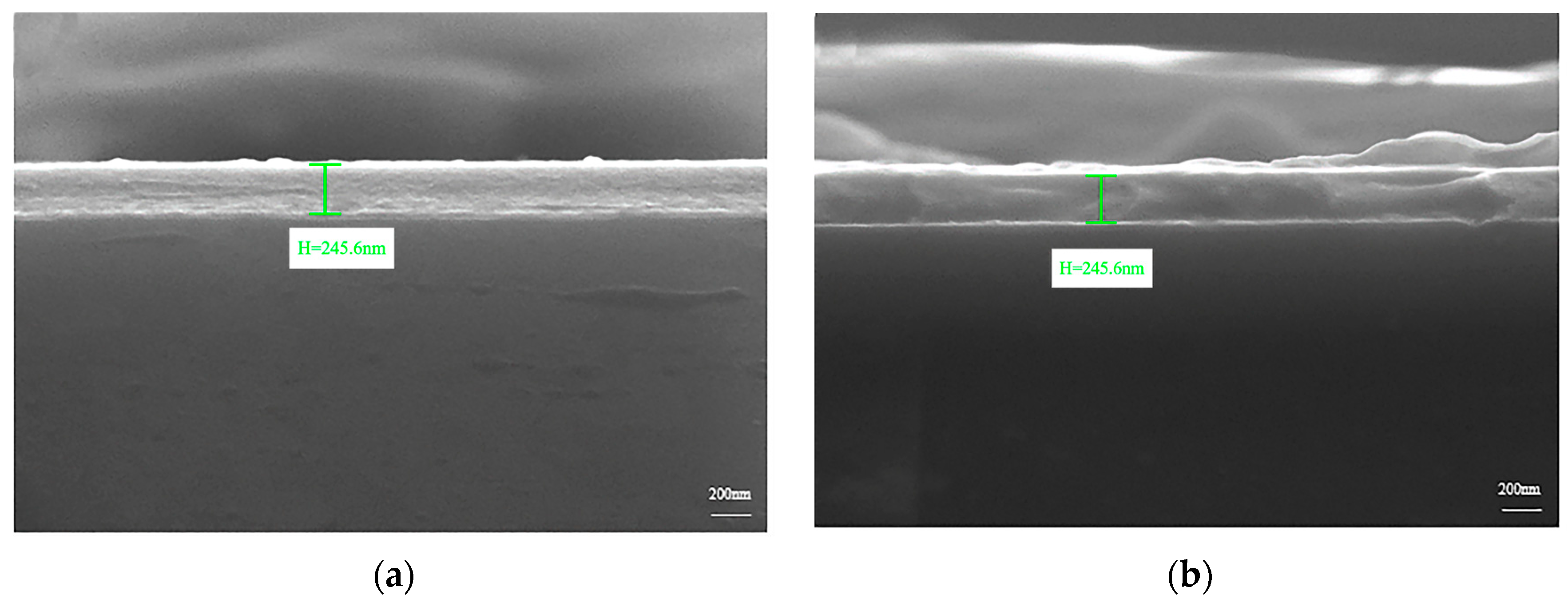
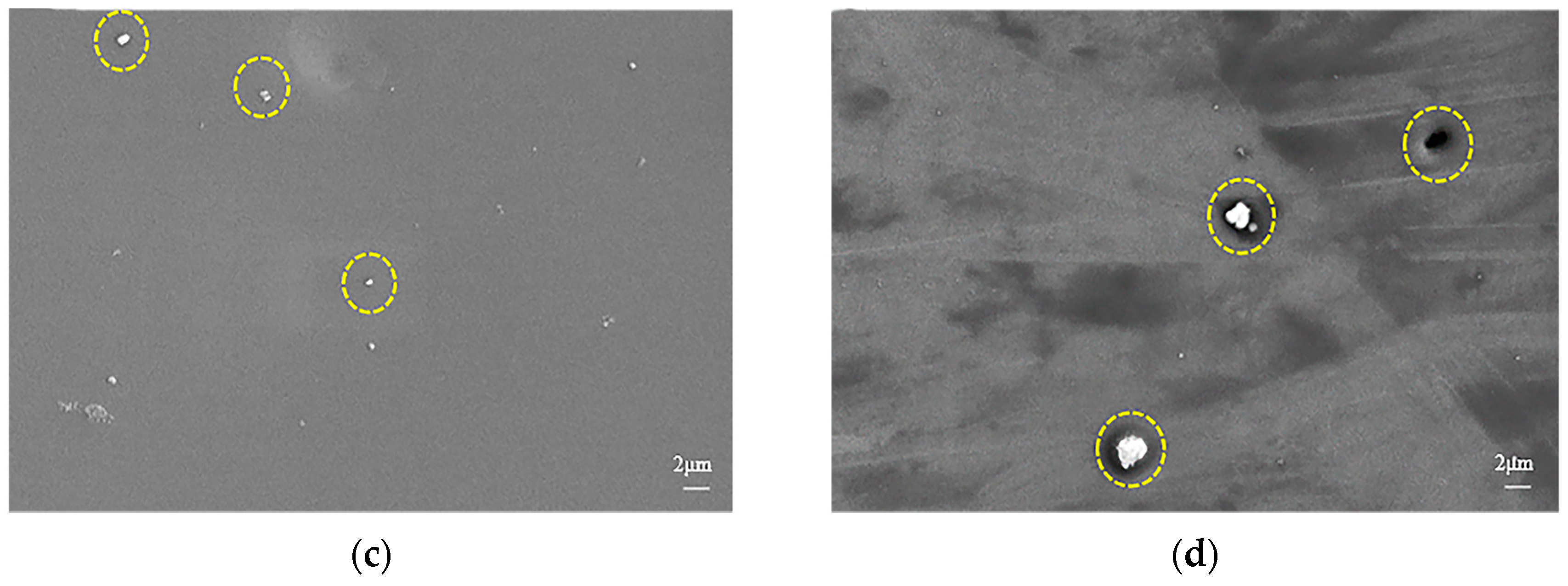
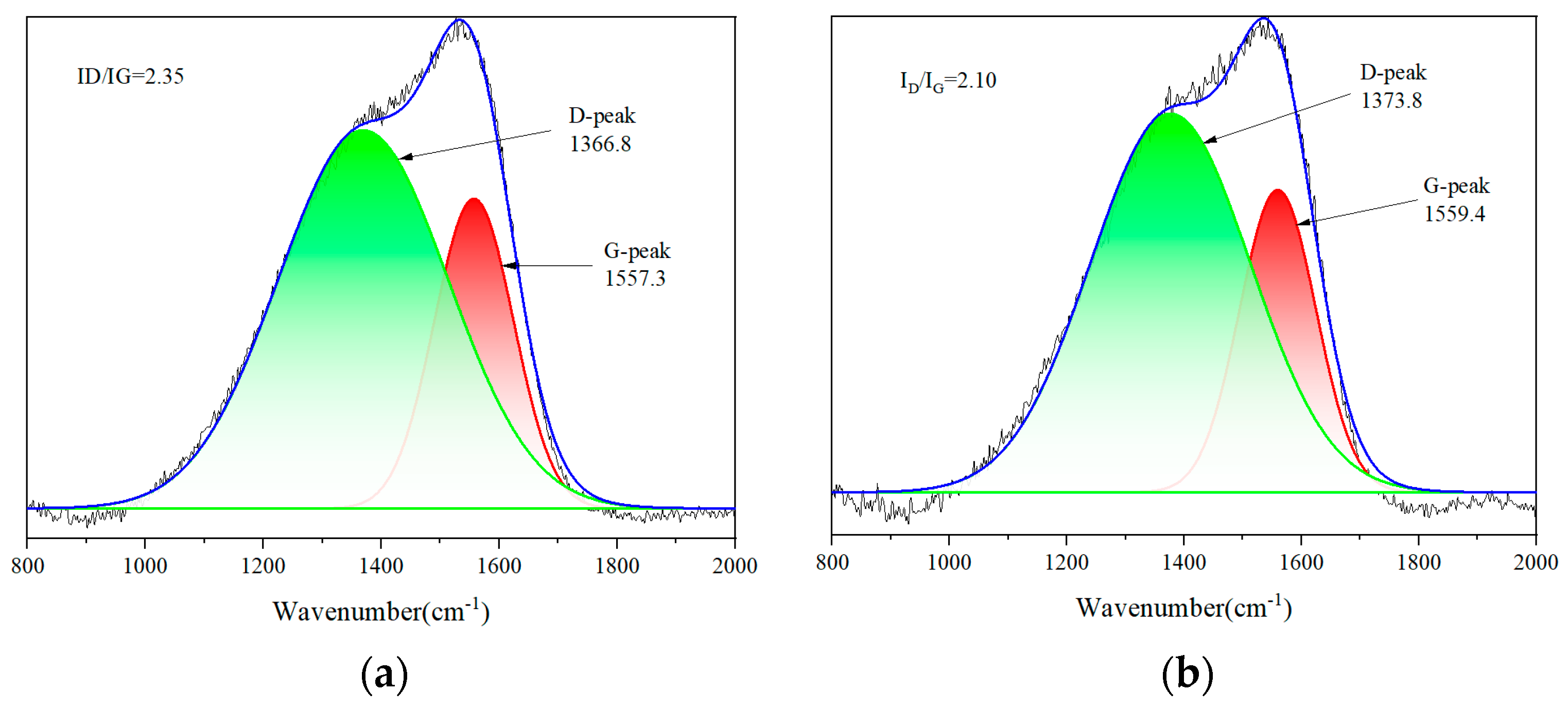
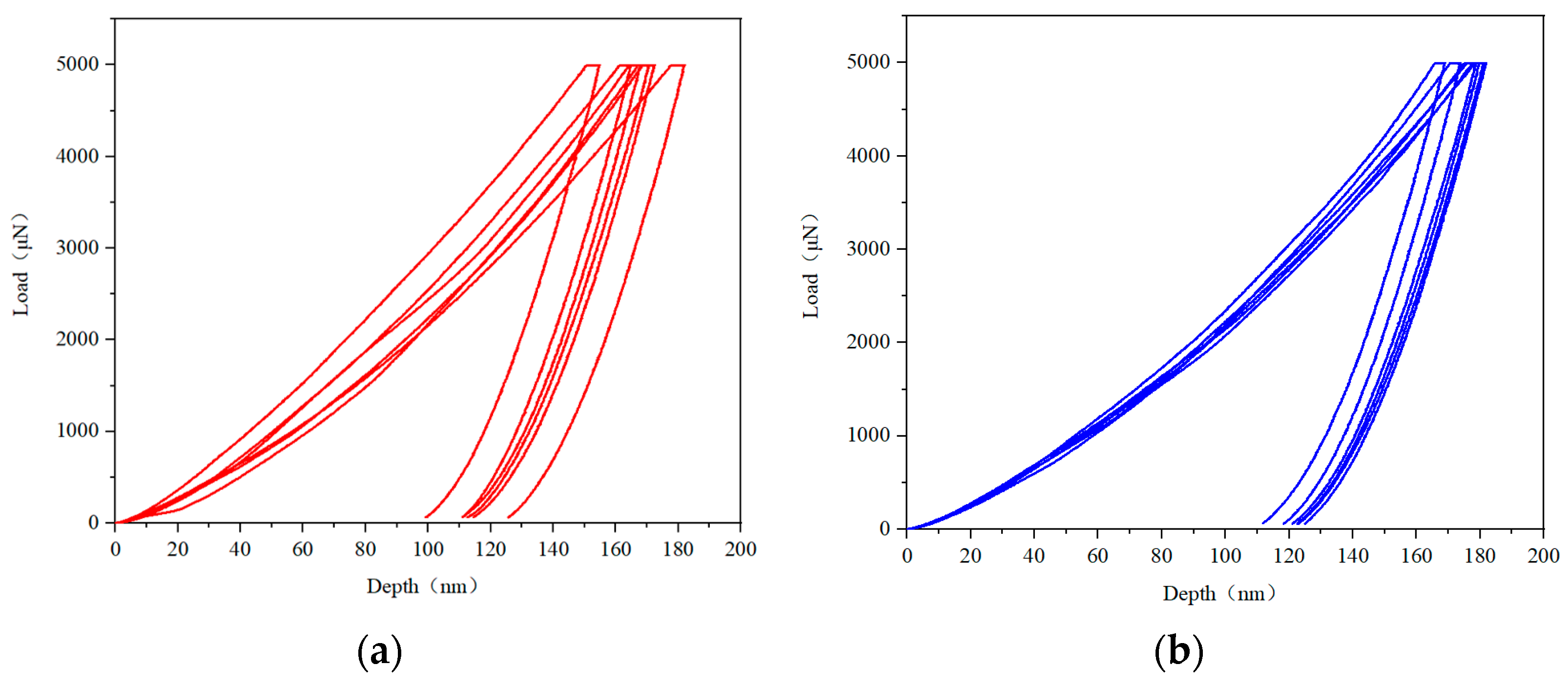
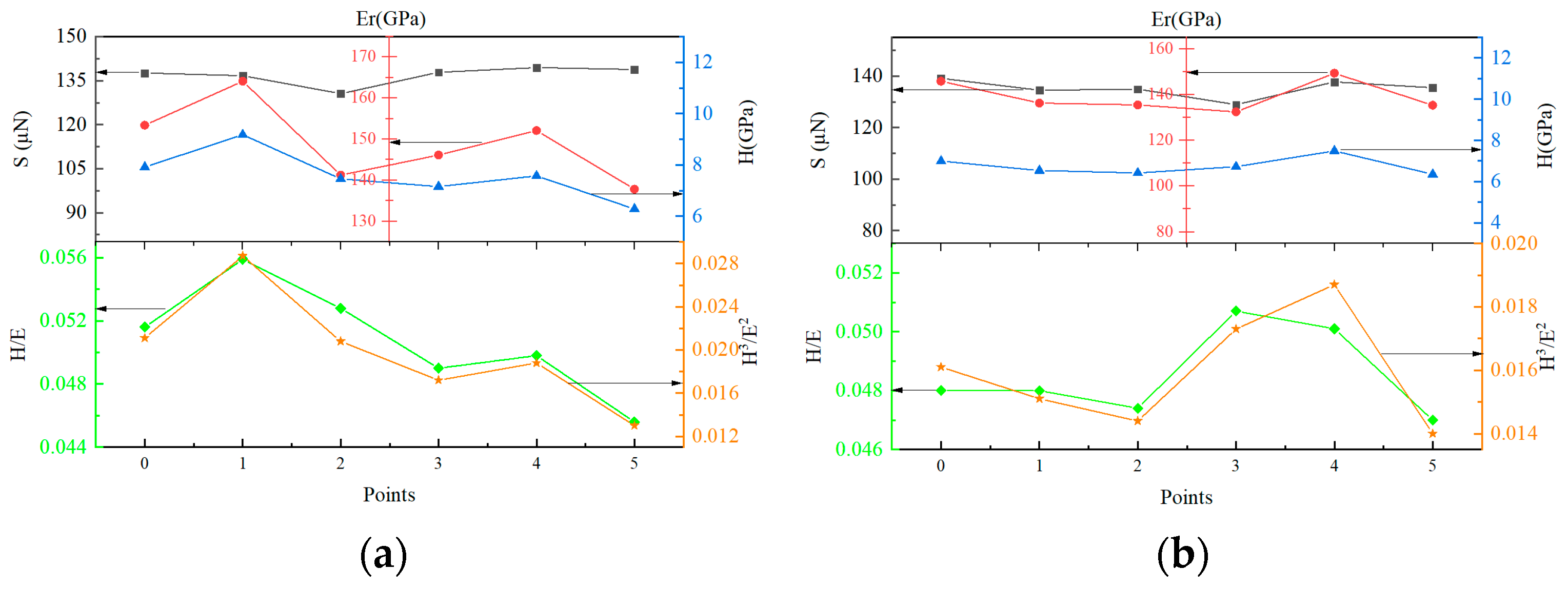
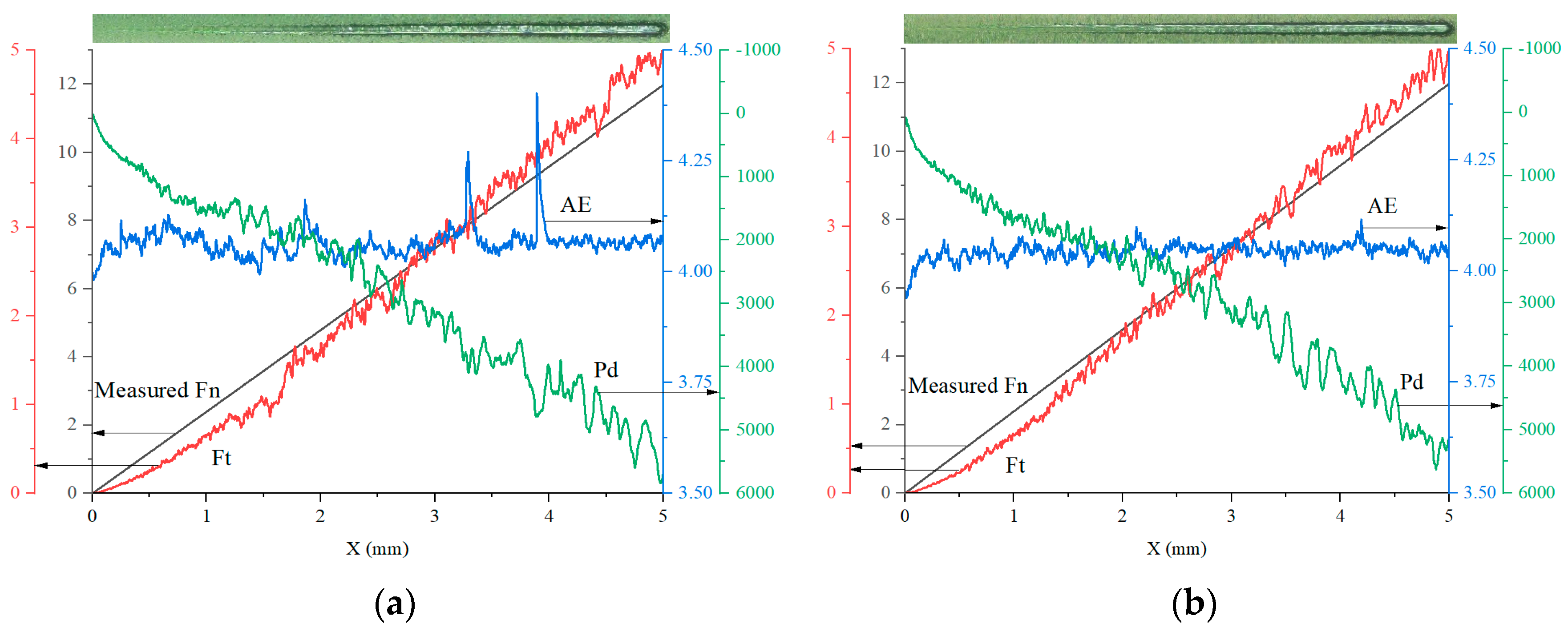

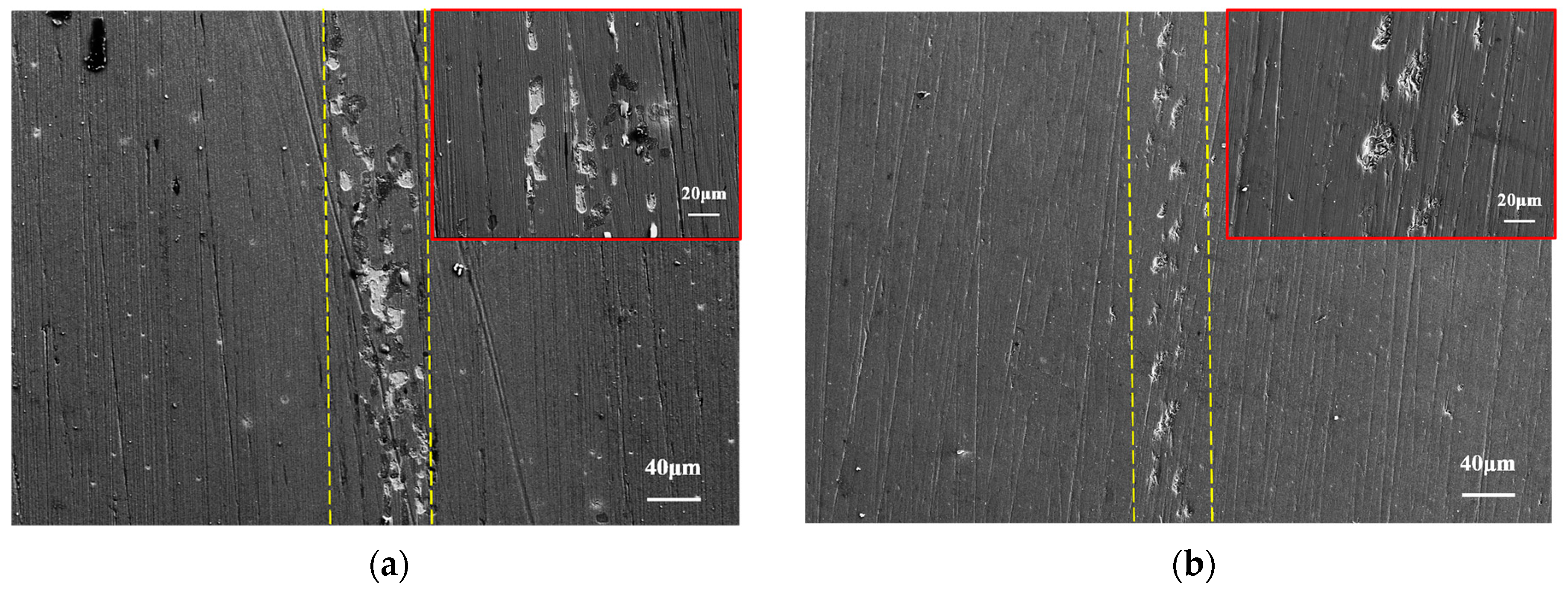

Disclaimer/Publisher’s Note: The statements, opinions and data contained in all publications are solely those of the individual author(s) and contributor(s) and not of MDPI and/or the editor(s). MDPI and/or the editor(s) disclaim responsibility for any injury to people or property resulting from any ideas, methods, instructions or products referred to in the content. |
© 2023 by the authors. Licensee MDPI, Basel, Switzerland. This article is an open access article distributed under the terms and conditions of the Creative Commons Attribution (CC BY) license (https://creativecommons.org/licenses/by/4.0/).
Share and Cite
Zhang, S.; Wu, S.; Huang, T.; Yang, X.; Guo, F.; Zhang, B.; Ding, W. The Effects of Ti/Ni Doping on the Friction and Wear Properties of DLC Coatings. Coatings 2023, 13, 1743. https://doi.org/10.3390/coatings13101743
Zhang S, Wu S, Huang T, Yang X, Guo F, Zhang B, Ding W. The Effects of Ti/Ni Doping on the Friction and Wear Properties of DLC Coatings. Coatings. 2023; 13(10):1743. https://doi.org/10.3390/coatings13101743
Chicago/Turabian StyleZhang, Shuling, Shuaizheng Wu, Tenglong Huang, Xiangdong Yang, Feng Guo, Bo Zhang, and Wenjie Ding. 2023. "The Effects of Ti/Ni Doping on the Friction and Wear Properties of DLC Coatings" Coatings 13, no. 10: 1743. https://doi.org/10.3390/coatings13101743
APA StyleZhang, S., Wu, S., Huang, T., Yang, X., Guo, F., Zhang, B., & Ding, W. (2023). The Effects of Ti/Ni Doping on the Friction and Wear Properties of DLC Coatings. Coatings, 13(10), 1743. https://doi.org/10.3390/coatings13101743






